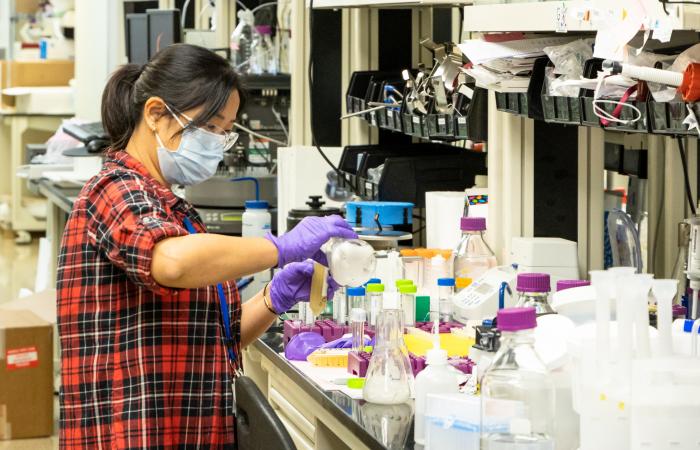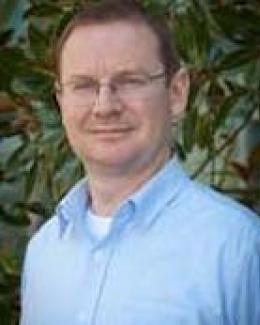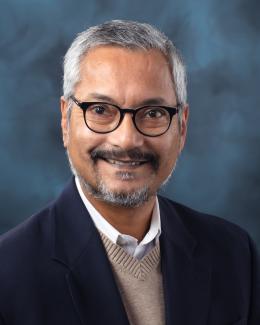Staff mobilize research, facility, community support to combat novel coronavirus
In the race to identify solutions to the COVID-19 pandemic, researchers at the Department of Energy’s Oak Ridge National Laboratory are joining the fight by applying expertise in computational science, advanced manufacturing, data science and neutron science.
Research and mission support are proceeding at ORNL, both onsite and as roughly two-thirds of staff members work from home to maximize social distancing. ORNL is providing remote access to its world-leading supercomputing and neutron facilities for researchers around the world to conduct critical scientific studies on severe acute respiratory syndrome coronavirus 2, or SARS-CoV-2, the novel coronavirus that causes COVID-19.
The lab and its staff are also working to support local communities in need of financial support and access to educational resources.
“I could not be prouder of our staff who have stepped up to offer their scientific and technical expertise to address this international pandemic,” said ORNL Director Thomas Zacharia. “It is during times of crisis that we have the greatest opportunity to distinguish ourselves in service to the nation. That is our legacy at Oak Ridge; it is who we are.”
Computational science. ORNL’s Summit, the world’s most powerful supercomputer, is accelerating COVID-19-related research through the new COVID-19 High Performance Computing Consortium. Several computing allocations are already running on Summit aimed at improving scientists’ understanding of the virus’ structure and biology towards developing targeted therapies and vaccines.
Researchers at ORNL and the University of Tennessee have used Summit to identify small-molecule drug compounds that might warrant further study. Dr. Colleen Jonsson of the UT Health Science Center in Memphis directs one of the few labs permitted to perform live virus tests and is testing the efficacy of drugs from the ORNL list on the novel coronavirus.
ORNL researchers are also employing artificial intelligence techniques to study the systems biology and molecular mechanisms of the coronavirus; deliver “self-driving” ventilators; model hospital infrastructure; and mine past publications to advance understanding of COVID-19 diagnosis, treatment, epidemiological and management challenges, among other efforts.
“America’s national labs are designed specifically to tackle the world’s most complex scientific challenges, and our continued investments in high-performance computing and cutting-edge data analysis have proven critical in tackling this global pandemic,” said ORNL’s Gina Tourassi, director of the National Center for Computational Sciences.
Neutron scattering. ORNL is providing remote, rapid access to its advanced neutron source facilities, the Spallation Neutron Source and the High Flux Isotope Reactor, to support research related to the COVID-19 pandemic. As part of the search for effective diagnostics and therapies, rapid access will be awarded for experiments to address necessary science and technical questions identified by the COVID-19 research community.
“Our Rapid Access program for neutron research at ORNL is designed to expedite outside user experiments related to COVID-19-related research and get them onto our beamlines in a matter of just days,” said Hugh O’Neill, team lead for the bio-labs within the Neutron Sciences Directorate.
Neutron research has the potential to yield vital insights into the structure, dynamics and function of viral proteins and their complexes with RNA and membranes — the components that enable viruses to function and replicate — as well as how they interact with potential antiviral inhibitors, substances that slow down or prevent certain chemical reactions.
O’Neill leads an ORNL team that plans to study SARS-CoV-2 proteins constructed from synthetic DNA. The genes will be inserted into bacteria to produce proteins of the virus, which will be studied using a suite of neutron scattering instruments to gain a better understanding of the structure and function of the disease. Results will inform development of improved methods for mitigating the virus.
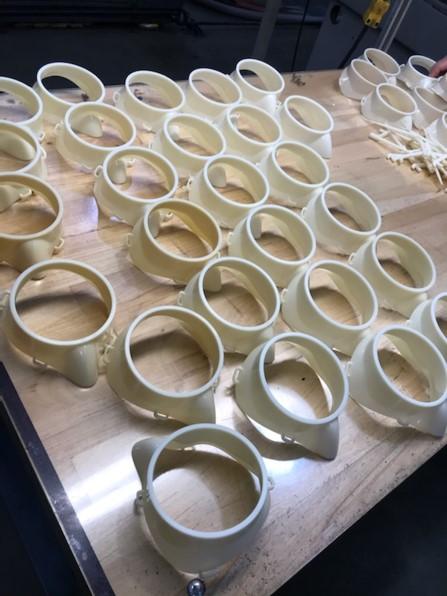
Advanced manufacturing. ORNL researchers are exploring efforts such as new designs for reusable masks and face shields. This includes using additive manufacturing to significantly reduce tooling cost and production time; coordinating with both medical suppliers and the manufacturing supply chain to speed and expand production capabilities; and establishing plans to reverse engineer and rapidly manufacture and distribute tooling for critical components.
“The Department of Energy’s Manufacturing Demonstration Facility and Carbon Fiber Technology Facility at ORNL are developing innovative solutions to the COVID-19 challenge at an unprecedented pace,” said Lonnie Love, ORNL’s lead researcher on COVID-19 manufacturing efforts. “From rapidly producing filter material to designing and printing mask molds and creating tooling sets for face shields, our researchers are focused on delivering industry the necessary resources to scale up and mass produce personal protective equipment for those on the front lines in this fight: our healthcare experts.”
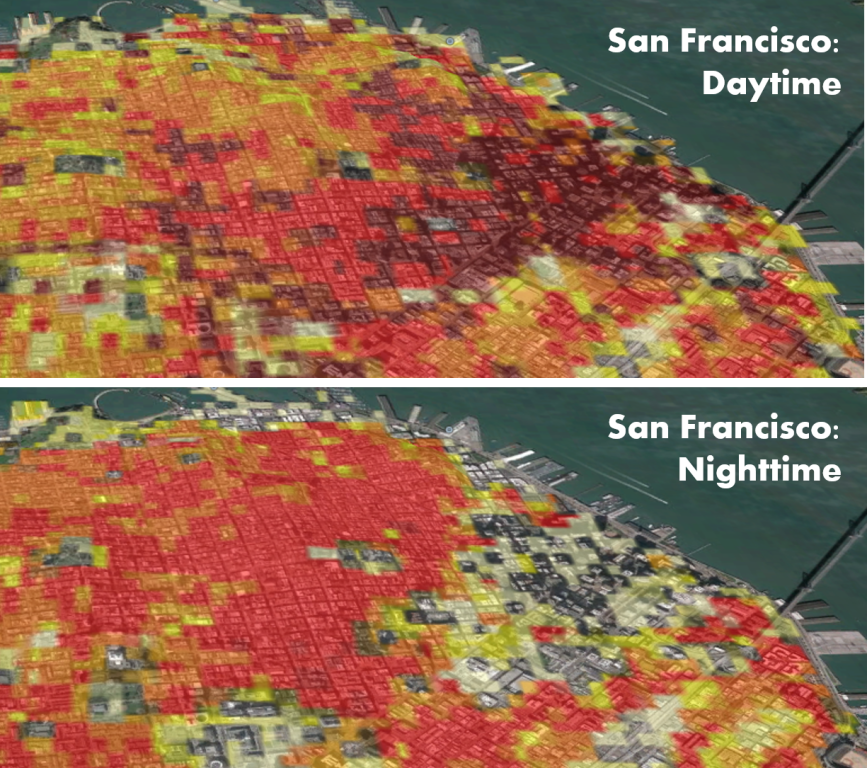
Pandemic modeling and analysis. Argonne, Oak Ridge, Los Alamos and Sandia national laboratories are collaborating to develop an integrated COVID-19 pandemic monitoring, modeling and analysis expertise, leveraging the labs’ collective scalable data and computing.
“Our goal is to provide improved situational awareness and insight into what is happening in different regions of the country and how different areas and populations are responding and reacting to conditions and interventions,” said Budhu Bhaduri, director of ORNL’s National Security Emerging Technologies Division. “Epidemiological prediction of disease progression and modeling consequent stresses on healthcare infrastructure and economic activities are major emphases.”
The lab has also made LandScan USA, which provides 90-meter day and night population dynamics data, available to the public in support of the response to the COVID-19 pandemic.
ATOM collaboration. ORNL is part of a multi-lab effort within the Accelerating Therapeutics for Opportunities in Medicine, or ATOM, consortium, a public-private partnership focused on dramatically reducing the time it takes to discover and develop new medicines through the application of leading-edge technologies like machine learning and artificial intelligence.
“ATOM applies computational workflows and supercomputing to optimize the safety and effectiveness of new molecules with the potential to become drugs,” said ORNL’s Marti Head, a co-creator of ATOM. “These computational tools were created to accelerate cancer drug discovery. But we can apply these tools to SARS-CoV-2, the virus that causes COVID-19, as more data becomes available from laboratories across the world on the interactions of small molecules with Sars-CoV-2 proteins.”
Community support. ORNL and its staff are responding to the impact of the coronavirus and response measures on local aid agencies and the community. UT-Battelle has contributed $10,000 to Second Harvest Food Bank, which has urgent and immediate needs, and an employee group is raising money for Second Harvest as well.
Lab researchers are connecting with local schools to engage students in STEM subjects. ORNL’s Community Engagement team is working with educators to match appropriate topics and learning levels with lab scientists who will provide content within their area of expertise.
UT-Battelle manages ORNL for the Department of Energy’s Office of Science, the single largest supporter of basic research in the physical sciences in the United States. The Office of Science is working to address some of the most pressing challenges of our time. For more information, please visit energy.gov/science.
See ORNL’s main COVID-19 news site for more information on the laboratory’s fight against the novel coronavirus.



